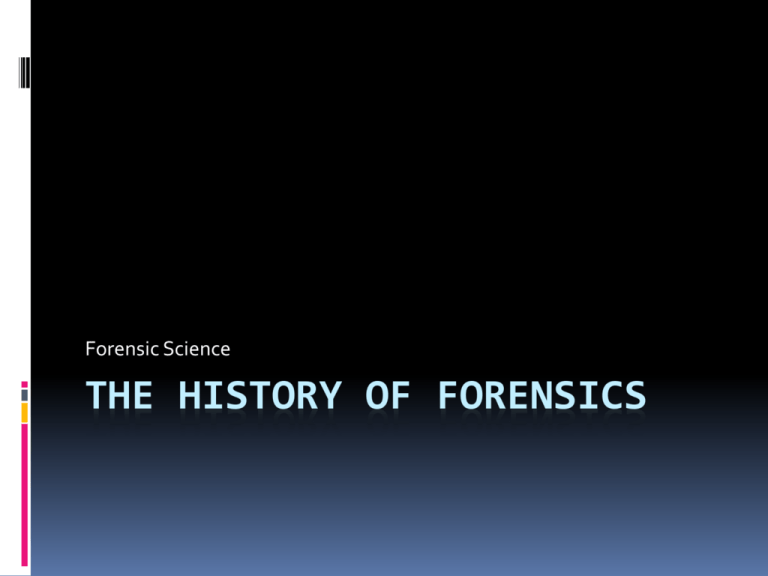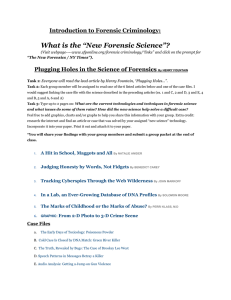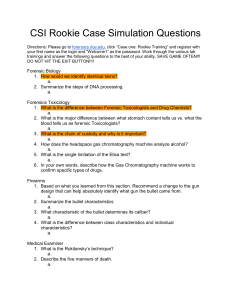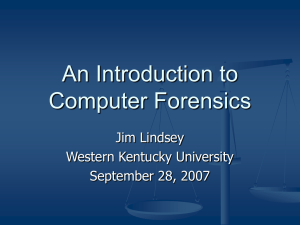The History of Forensics - The Center For Creative Scholars
advertisement

Forensic Science THE HISTORY OF FORENSICS “Eureka” Early use of Forensics Legend of Archimedes (287-212 BC) – He evaluated using measurement and weight and determined that a crown was not completely made of gold as was claimed. Xi Yuan Lu – “Collected Cases of Injustice Rectified” (1186-1249) China. 1776 Swedish chemist Carl Scheele devised a way of detecting arsenous oxide, in corpses. German Chemist Valentin Ross learned to detect the poison in the walls of a victim’s stomach. Sherlock Holmes Fictional Character created by Sir Arthur Conan Doyle in works produced from 1887 to 1915. He used Forensic science as one of his investigating methods. Conan Doyle credited the inspiration for Holmes on his teacher at medical school. He was a gifted surgeon and forensic detective Joseph Bell. Forensics Today DNA – Every cell has DNA in it, like your fingerprints, is different from everyone else’s. Fingerprinting Footprints Chromatography- Pigment that is a chemical that makes something look a certain color. pH Testing- Acidic or basic Tape lift – Evidence is lifted on adhesive tape to help solve crimes. Forensic Science Vocabulary Forensic – Having to do with a court of law. Criminalist – anyone who uses science to analyze, compare, and interpret physical evidence for use in court. Forensic Scientists – Enter investigations at the beginning. All evidence must be found photographed and collected to be studied in the lab.











